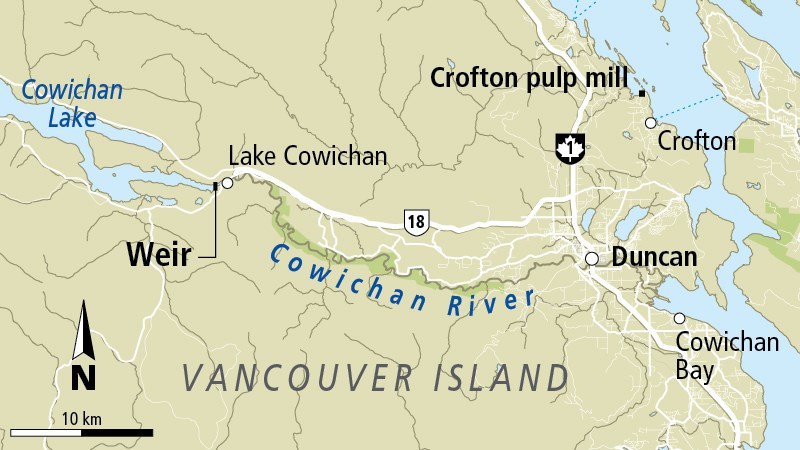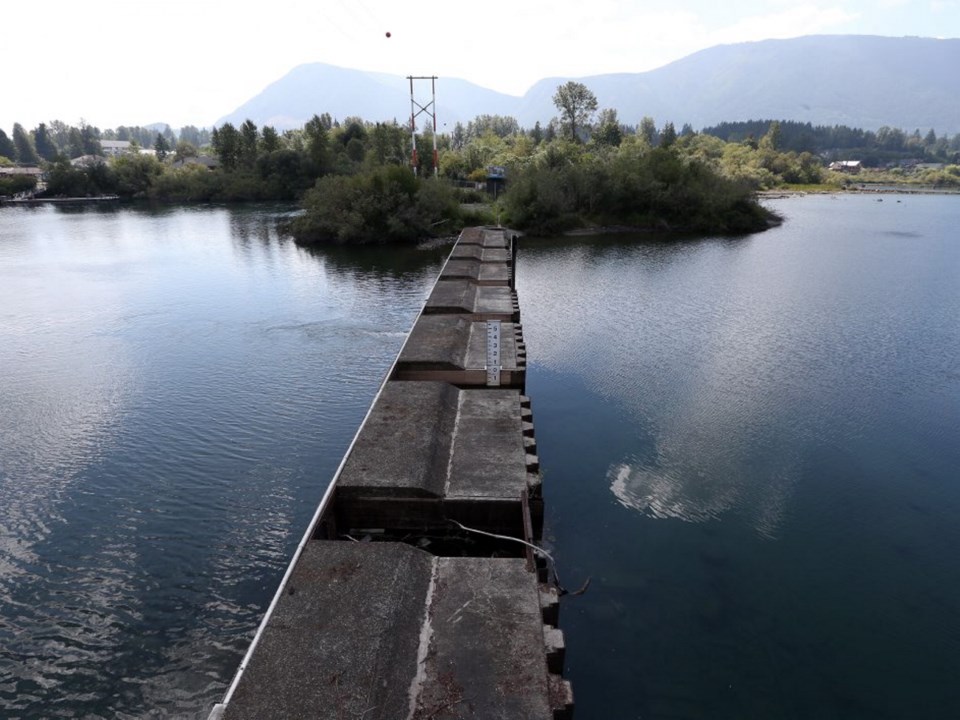Cowichan River stewards are taking emergency measures to ration the water supply, calling it the new “worst year” for early drought conditions.
Cowichan Lake, which feeds the river, is about 46 per cent full — the lowest late-May level since the weir was built in 1957, according to the Cowichan Valley Regional District.
“This year is the worst ever. It feels like we just keep redefining the worst year, every year,” said Brian Houle, environmental manager for Catalyst Paper, which operates the weir.
Pressure has been mounting in recent years on the river, which is a vital resource to a variety of stakeholders — from the salmon that spawn there to the 600 millworkers whose livelihood depends on its flow.
Catalyst has been granted emergency authorization to reduce the river flow to 4.5 cubic metres per second — a move that came about one month earlier than last year. That’s the lowest possible flow to accommodate fisheries survival and sewage dilution.
Although the Cowichan Valley had a wet winter, the weir isn’t high enough to preserve much of that water for summer use, Houle said. That means spring and summer conditions are extremely important in determining the health of the river through the summer.
As of May 16, Cowichan Lake had received only one-third of the 30-day average precipitation, North Cowichan had received only 22 per cent and Shawnigan Lake had received only 24 per cent, according to a CVRD staff report.
While measurements of the Heather Mountain snow pillow in the Cowichan River watershed were discounted due to instrument accuracy issues, the nearby Jump Creek snowpack was recorded at less than eight per cent of average levels.
“We thought we were in better shape this year. However, warm temperatures and a dry early spring saw the snowpack disappearing quickly,” said CVRD chairman and North Cowichan Mayor Jon Lefebure.
“There’s not much left right now and the warm temperatures really had an impact, drying up the contributing streams and so on.
“So we have very serious drought conditions right now.”
The dry spring conditions have affected areas beyond Cowichan River. The Chemainus River, San Juan River and Cottonwood Creek are also at their lowest levels on record for this time of year, the CVRD says.
Stakeholders including Cowichan Tribes, the CVRD and Catalyst Paper are working to raise the weir. Although the CVRD was unsuccessful in its bid for provincial gas-tax funding for the project, which has an estimated price tag upward of $10 million, Lefebure said other avenues are being pursued.
“We have a number of tracks we have to follow,” he said.
One priority is getting a licence to store more water, but stakeholders will have to determine who among them should apply for it, Lefebure said.
Realistically, he said, it will be years before they can hope to see the weir raised. In the meantime, they are looking at short-term fixes, such as flashboards that might be added to the top of the weir, raising it up to one foot.
The river is projected to drop below the minimum flow beginning Sept. 4, unless there are substantial rains.
“If we don’t get any rain before September, we’ll have zero storage. It’s very serious. We’re really concerned about it,” Lefebure said. “For this summer, the antidote is rain. That’s what we need.”




